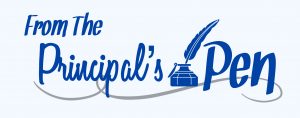2/7/21
I got a pocketknife for Christmas when I was 13 years old. It was an olive green lock blade buck knife with a bright shiny blade that was sharper than any knife I had ever had in my life. As we usually did on Christmas, we left mid-morning for my Grandfather’s house. He lived out in the country, on a farm, well past where the pavement ends. That Christmas morning, while the family prepared lunch, I sat on the front porch to whittle. Or to at least try and learn to sculpt with my blade. Unfortunately, my practice did not go as planned, and I ended up with an inch long gash on the index finger of my left hand. When mom saw it, we immediately headed for town to find someone to sew it up. I did my best to get her to at least wait until after lunch, but she would have none of it. After all, I was a growing boy, and lunch at Grandpas was usually outstanding. I had my priorities. Unfortunately, we headed for town, not waiting for lunch. Five stitches later, I was all sewed up and hungry. It took more than three hours to get stitched up, and I never got Christmas Lunch at Grandpas that day.
Over the years, the scar has faded but was still recognizable enough to use it to remind my nephews at Christmas to be careful when using a knife, especially before Christmas dinner. While the scar faded, my love for knives didn’t. It seems I have always had a bit of a fascination with knives. As I have grown older, I pay attention to the quality of blades and the kind of steel used. It doesn’t matter if it goes in the kitchen or your pocket; I enjoy a good knife as much as anyone.
Knives need to be sharp and ready for whatever task might come their way. When cooking in the kitchen, nothing bothers me more than pulling out a knife to find it so dull I need to saw my way through the next cut. When I was younger, I ruined more than one blade learning the finer details of using a sharpening stone. Sure, there are many new devices and tools to help you get just the right angle, but I find the practice of slowly running a blade across a stone to hone an edge both relaxing and rejuvenating. For me, it is a bit like therapy. Sitting quietly at the kitchen table with a couple of knives and just as many sharpening stones of differing textures is relaxing.
Sharpening requires two critical components. It requires both Focus and Friction. Without focus, you will quickly find yourself making another trip to the doctor to sew up a wounded or missing appendage. You must also focus and be keenly aware of the blade’s angle and pressure as you move it across the stone. The wrong angle or amount of pressure, and you will never reach your desired results. As you can imagine, focus is essential. The right kind of friction is just as important. Working through sharpening stones of differing textures and resistance one by one will gradually leave you with just the right edge on a blade. Honing a knife is a deliberate, intentional process. By moving patiently from one stone to another, carefully selecting just the right amount of friction, you can make the blade just a bit sharper than it was before.
I learned an important lesson early in life, “We must each be responsible for our own blade.” How sharp it is, what we do with it. It is ours and ours alone. Knives and learning have a lot in common. Honing takes a lot of work, and it is an ongoing process. This process helps us prepare for the future and the world that lies ahead. One way we do this is through reading. Former General and Secretary of Defense Jim Mattis once said, “The problem with being too busy to read is that you learn by experience (or by your men’s experience), i.e. the hard way. By reading, you learn through others’ experiences, generally a better way to do business, especially in our line of work where the consequences of incompetence are so final for young men.” Reading sharpens our ability to see and prepare for the world ahead of us. Literacy and critical thinking are essential elements in the educational process. Sharpening these skills matters.
We must teach our youth to be constant learners, honing their experience with the experience of others. During World War II, Winston Churchill said that we each have a moment in our lifetime where we have an opportunity to do something special. I believe that my generation may be living in that moment right now. Along with responding to the challenges that we currently face, we must also prepare the next generation to respond when their moment comes. We do this through the critical skill of sharpening.
“To each there comes in their lifetime a special moment when they are figuratively tapped on the shoulder and offered the chance to do a very special thing, unique to them and fitted to their talents. What a tragedy if that moment finds them unprepared or unqualified for that which could have been their finest hour.”
-Winston Churchill
PDF Version: Sharpening
Share This

